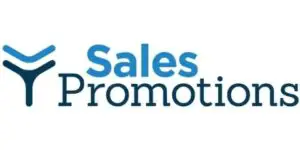Table of Contents
*This post may contain affiliate links. As an Amazon Associate we earn from qualifying purchases.
What’s Urgent Versus Important
The 80/20 rule, also known as the Pareto Principle saved my career many times.
The first time Pareto saved my butt I had been working a Marketing Manager at a time when an economic downturn occurred
The business shift had seriously affected the industry my employer was in. The company had assessed the situation and decided to quickly lay off half the marketing staff.
I survived the layoff and I was grateful for having a job. So I thought.
Almost immediately, every ongoing marketing partnership and project that the company was contractually bound to complete was piled upon me.
Reinvent And Work Smarter

I was overwhelmed with details and I worked long hours trying to dig out of the mess.
It was more than one person could handle, but as a low-level manager, grateful to have a job, I pressed on. It was the only way I knew to succeed, at the time.
One late night session spent digging out, a high-level executive, a mentor, from another department popped his head in my office and said, (and I quote)
“Dude, if you try to do it all you’ll never get it done and they’ll probably end up firing you. Take control. Use the 80/20 principle to decide the 20% of the work that’s profitable or in the best interest of the company and ditch the other 80%.”
Thought Leadership And The Pareto Principle

I thought that ditching 80% of all my work was the craziest thing I ever heard.
However, I took a step back and really considered why all these projects needed to get done now, considering the changing business environment.
I boldly determined the top 20% of profitable and/or critical projects to be focused on.
I then moved budgets around so that I could outsource work to marketing and advertising agencies.
I also spoke with marketing partners and my supervisors to negotiate new agreements.
Applying the 80/20 rule marketing strategy I went from being buried under a pile of project details to taking a thought leadership approach.
Change Your Attitude And Your Life
Focusing on what was strategically important I shifted my management time to overseeing projects and driving improved results.

When the next fiscal year came around the business environment began to improve.
Amidst my busy schedule, managing agencies and external business partners, I was called into the Executive VP of Marketing’s office.
To be honest, my first thought was that I may have overstepped my limits and was going to hear about it. Or worse.
On the contrary, I was praised for the way I handled the business situation and was presented with a positive performance review.
As part of the review, I was promoted to the position of Marketing Director and I was to hire a team to expand upon the new strategic direction.
The Changing 20% Paradigm
I have learned over my years in business is one thing is certain: the future will never look like the present.

Whatever your best-laid plans are, always be ready to re-access the situation.
Determine if the things you planned on accomplishing in the short-term are still relevant as changes in the competitive environment, technology, human creativity, and other factors shake up your world.
Are those top 20% goals still relevant as they were when you developed them?
“The future ain’t what it used to be” Yogi Berra
Pareto Principle Strategic Planning
When I facilitate a strategy session with a business, of any size, there always seems to be an overwhelming amount of tasks which need to be done to achieve business goals.

Truthfully, people begin to get anxious over the many great ideas they’ll never have time to accomplish
My answer is the 80/20 principle is built into the planning process to help us come up with a very achievable plan.
The strategy session focuses on the big question:
‘What the organization wants to achieve in the next 3 to 5 years’.
The next step is to layout the individual tactics to accomplish this 3 to 5 year mission. We call these tactics Critical Goal Categories.
Ultimately we end up with a hot mess of important things to get done without the time and resources to achieve them. It’s the very same situation I was in when the company downsized and dumped too many projects on one person.
What’s Necessary and Sufficient
What is the 80/20 rule in a strategic planning session? Essentially it’s an evaluation of the most important tasks that are necessary and sufficient to achieve your immediate goals.
Typically an organization will have an average of eight critical goal categories. When evaluating each goal separately, a series of smaller SMART* goals are created along with action steps to achieve each one.

Then the critical goals and action steps are prioritized based on the overall 3 to 5 year mission. Magically, the top 20% of Key Performance Indicators (KPI) are identified and we have an achievable plan.
The kicker is, in six months a review of KPI’s is done to make sure that goals are being accomplished.
A determination if these KPI’s are still relevant, or need adjustment in a rapidly changing business environment, is made.
Managing and reviewing the results of your KPI’s are much easier when specific objectives and goals are clearly defined.
If tasks that fell in the 80% range are still needed to achieve organizational success, they will naturally shift into the urgent 20% range as goals are achieved.
A Study In 80/20 Marketing
Understanding the Pareto principle, successful businesses have embraced the concept that 20% or their customers deliver 80% of the organization’s profits.
As customer’s situations change, new customers have to be elevated to the 20% club.
So it makes sense that if you want to expand your business the overall prospective customer population should be increased.

Attracting and keeping profitable customers, while continually appealing to their clones is a never-ending battle.
Companies that have launched Customer Loyalty programs are well aware of who their top customers are.
They are also aware of the psychographics that similar costumes within their category possess. Knowing what motivates them helps when they entice them to brand switch through marketing efforts.
Brand Loyalty Is A Habit
The thing about customer loyalty is that it’s not merely a transactional process, as a company CFO may view it.

Instead, customer loyalty is behavioral. Loyalty is a purchase habit motivated by four things:
- Product Value
- Customer Experience
- Emotional Connection
- Contact & Recognition
These four business principles apply to all businesses, loyalty program or not.
When you have a product or service that has value to your customers simply telling them how great the product is not enough.
Ideally, a brand needs to touch upon all four of the loyalty motivators to move the needle.
How Presidents Use Loyalty Motivators
A prime example of this can be found in every US President’s State of the Union address since President Reagan.

The President, as a speaker, is pushing an agenda. A member of the audience is specifically invited to help make the issue real to listeners.
This guest, usually an ordinary person who achieved something extraordinary, is asked to stand and receive their standing ovation.
Immediately the agenda being discussed has value as the person’s heroic action is shared.
We all live the experience together in the moment. Connecting emotionally with the hero and recognizing their actions makes us proud.
So what does this have to do with the 80/20 rule? The speech example shows how all four motivators can be tied together in an instant to build a greater audience.
Loyalty Motivators Build Customers
Connecting on all four cylinders in an advertising, a promotion or sales promotional campaign is never as easy as the speech example. However, the process of getting these motivators right may work to your advantage.

The solution is in testing concepts. The objective is to find the perfect message to encourage product trial and/or brand switching.
For new to market participants, the goal is to immediately share the benefits of using your product over the competitions to create an immediate connection.
Testing concepts is extremely important in marketing, yet many skip this step and rush to approve the concept that everyone believes will advance the brand.
The outcome of promotion testing is you will increase your marketing X10.
- Increasing your reach occurs when you segment your audience for a accurate test process.
- Intensifying your message occurs through using A/B testing.
- Staying fresh and top of mind, while avoiding message fatigue by rotating messages, are the three primary benefits of running marketing tests.
Purchase Motivators As Test Themes

First, identify the first three purchase motivators for your brand. Remember, Product Value, Customer Experience, and Emotional Connection are the stated indicators.
Then set up tests ads, direct mail campaigns, social media ads, or whatever media you are using, testing different presentations of these indicators.
An example of three test promotions are:
- Lead with emotion and have product and customer experience as secondary motivators.
- Lead with the customer experience and have product and emotion as secondary motivators.
- Lead with product value and have emotion and customer experience as secondary
Establish a response mechanism to measure results and determine which approach tracked better or motivated people to action more.
Another way this approach can be used effectively is to develop a series of campaigns using different motivators as the lead message. Test response to each approach.
By doing this, you are connecting with prospects and/or customers multiple times.
The act of testing creative and/or sales promotion offers should ignite different purchase motivators within your audience.
Hack The 80/20 Rule X10
How these test techniques hack the 80/20 rule is you are connecting with a targeted audience while expanding your top performing 20%.

Along the way, you are connecting with prospects while identifying the specific indicators that motivate purchase and brand loyalty.
Understanding the psychology and demographics of your customer, viz. psychographics, and effectively using purchase motivators keeps people engaged on many levels and connected with your brand.
Focus On Improved Results
In all three 80/20 examples, the secret to success is taking all your activities, ideas or options and determining the activities that will generate the best results.
Chunking down huge tasks to smaller achievable tactics uncovers a wide array of activities to identify the top 20% of anything.
*SMART Goals – Specific, Measurable, Attainable, Realistically High and Results Oriented, Time-Bound

